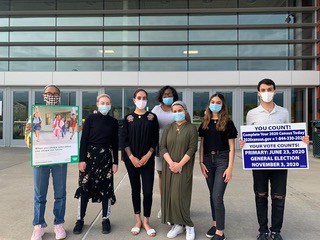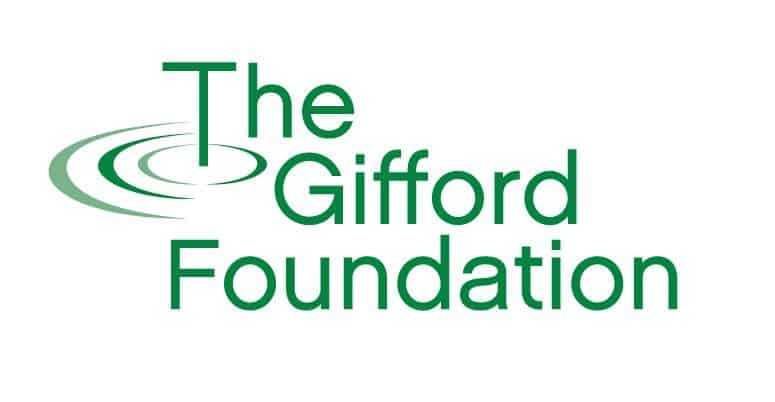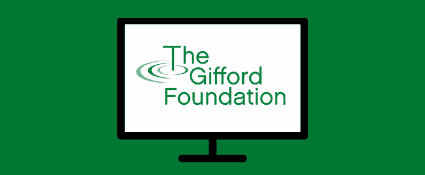Raising Up Voices and Votes
League of Women Voters members Elaine Wolf and Joan Durant are leading the charge to increase voter turnout and political awareness in Onondaga County.
Published: August 18th, 2020
The League of Women Voters noticed something incredible in 2016. Despite the close race, unprecedented scandals, and intense polarization surrounding the election – voter turnout in many areas of Syracuse was astonishingly low. Though Presidential elections always draw a higher participation rate than other years, some districts only saw half of registered voters casting a ballot. In 2017 – the year of the Syracuse mayoral election – the numbers plummeted even further with only 35% of registered voters participating. This disturbing lack of civic participation inspired The League to partner with The Dunbar Association, TNT, and the NAACP to form the Onondaga Votes! initiative in 2018. Their goal was simple: to increase voter turnout across the City of Syracuse.

Onondaga Votes! workers outside of Fowler High School work to register newly eligible voters and build interest in the electoral process.
In the spring of 2017, they successfully applied to the Gifford Foundation for a “What If…” mini grant that helped fund their efforts. League of Women Voters and Onondaga Votes! member Elaine Wolf explained that often “It’s difficult to get grants because there are so many bigger organizations.” Targeted at grassroots groups and individuals, The Gifford Foundation’s What If grants are designed to help Syracuse residents with a vision get their ideas off the ground. Over the course of 2018, Onondaga Votes used their funding to target Districts 2 and 5 in Ward 19 which historically had some of the lowest voter participation in Syracuse.
Their campaign was multifaceted and nonpartisan. They had no agenda about who voters should choose, only that they become invested and active in the process. Onondaga Votes! volunteer Joan Durant explained: “Educating voters – not to tell them what party to vote for, not to tell them what candidate to vote for – but to vote and be educated about who you’re voting for was just very important to me.” Educational flyers were printed and distributed. Childcare and transportation was arranged for those who needed it. They conducted in-depth research into previous initiatives and found that direct one-on-one conversations were often the most effective avenue to changing voter habits. Canvassers knocked on doors throughout the target neighborhoods, gently offering information about how to get involved and addressing residents’ concerns.
Through countless conversations with Syracuse residents, Onondaga Votes workers discovered that abstention from voting most frequently derived from a combination of apathy and lack of awareness. Addressing confusion about the voting process proved to be the easier problem to solve. Educational handouts explaining which candidates were running for which office, outlining the absentee voter process, the early voting system, and other topics had a strong impact. Unsurprisingly, the more difficult challenge was convincing eligible voters that making an effort was worth it.
Part of the problem comes from an increasing disconnectedness within communities, says Durant. “What we’re seeing is that they’re not really communities who talk together or come together.” Her experience walking door to door revealed that many neighbors simply do not know each other. She emphasizes how a sense of connection to the community is an essential motivator for civic engagement. For lower income families who move frequently, an added challenge is created because their voter registration has to be manually updated each time. Durant and Wolf both emphasized how educating potential voters about the importance of local government is essential. All too often, national politics steals the spotlight. “Local elections are so important because they control our day to day life,” says Durant, “That’s what got me involved with the League.”
Onondaga Votes! also works extensively to help formerly incarcerated citizens regain their voting rights. Durant described a visit she made to the parole board where they were educating parolees about the reregistration process. “This gentleman kept getting up and down, up and down, and there were about five of us sitting around the table and we were talking about voting and why it was important for them to vote and fill out voter registration forms. When he finally came back to the table, I said ‘You’re not going to register, are you.’ He said ‘There’s no reason for me to do that – I’m not going to vote.’ So I looked at him and said ‘You want this old white woman to make decisions for you?’ And he said ‘Give me the pen’. I think people need to understand that I shouldn’t make decisions for them.”
Members of Onondaga Votes! and the League of Women Voters are also quick to point out that our elected officials share the responsibility for boosting faith in the voting process. Onondaga County is in the midst of a long struggle to redraw our electoral district boundaries, which are often cited as an example of gerrymandering. The League of Women Voters endorsed a plan for redistricting that was created by an independent commission but was then recently voted down by Republican legislators. “I was very disappointed by the vote,” said Elaine.

Onondaga Votes! members Chanel Turnquest, Charles Pierce-El, and Mary Kuhn working to register voters in 2018.
A breakdown of the results following the 2018 election showed huge spike in participation with each targeted district showing a roughly 50% increase in voter turnout compared to previous years. The success of the Onondaga Votes! campaign inspired similar efforts in 2019 and this year in 2020. A second What If mini grant was awarded by the Gifford Foundation to help fund this year’s outreach efforts, which will require reimagined strategies due to the challenges posed by the COVID pandemic. Through phone and email canvassing, Onondaga Votes! already arranged for more than 200 informational lawn signs to be placed throughout Syracuse prior to the primary elections to help educate voters about the process. They plan to repeat that strategy ahead of the general election in November while also pursuing other socially distant awareness efforts. “One idea we have thought about is riding through the streets with a bullhorn,” said Durant with a chuckle. “It’s as close to door to door as we’ll probably get.”
Looking to the future, Wolf and Durant are already finding reasons to be hopeful. “The BLM people, the Last Chance for Change people, who have been demonstrating… I think that’s a really positive sign,” says Wolf. “We need to make [our civic institutions] answerable to the people, not just those who happen to be white and wealthy.” She is hopeful that these movements will draw new blood into the process of political participation. “I would love to see Onondaga Votes! five years into the future still be an entity but have leadership that’s younger and from the community, from the neighborhood. That’s been my dream.”
In response to the ongoing controversy surrounding mail-in voting and the preservation of the USPS, the League of Women Voters and Onondaga Votes! have issued the following statement:
During the six-week period leading up to the general election Onondaga Votes! will be engaged in getting voter education out to the public including information about voting by absentee ballot and an urgent call for people who plan to vote by absentee ballot to request their ballots as soon as they are made available by the Board of Elections and to immediately mail or deliver completed ballots after receiving them.
Subscribe to the Gifford Newsletter
Start enjoying our free quarterly publication today.


